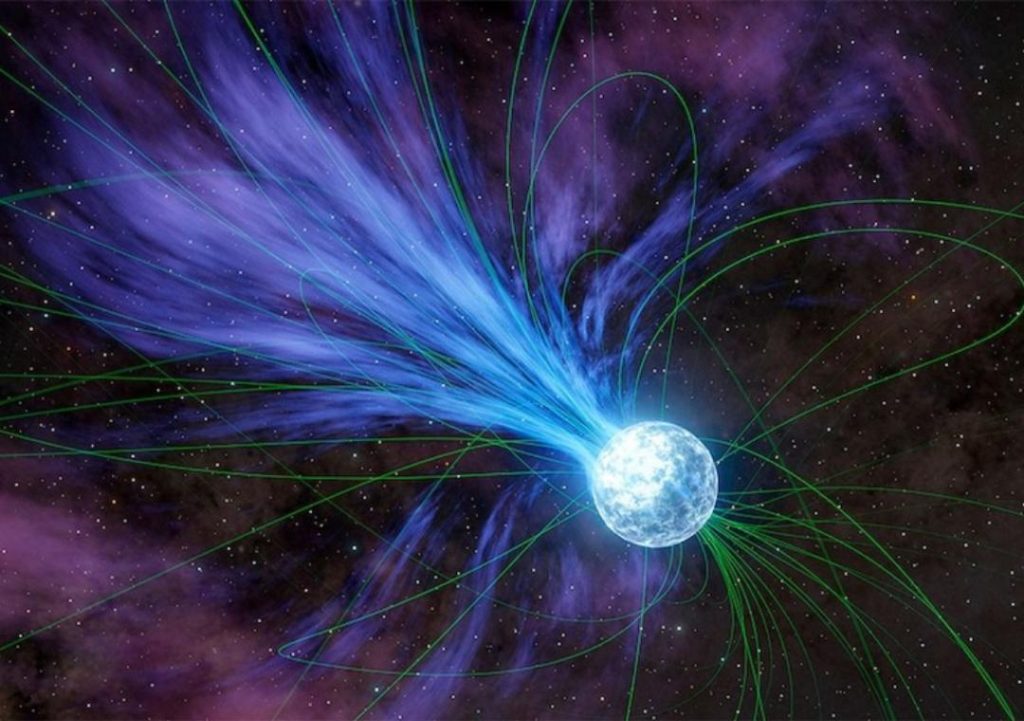
Gold & Platinum Created Through Neutron Stars’ Explosions: Study
For centuries, humans have been fascinated by the origins of precious metals like gold and platinum. While we have long known that these metals are found in the Earth’s crust, the exact process by which they were created has remained a mystery. However, a recent study led by Columbia University student Anirudh Patel has shed new light on the subject, providing a fascinating explanation for the origins of these valuable metals.
According to the study, gold and platinum were created through the explosions of magnetars, or highly magnetized neutron stars. These powerful explosions, which occur approximately once per decade in the Milky Way and annually across the observable universe, are capable of producing the elements that make up our planet’s crust.
To understand how this process works, it’s first necessary to understand what neutron stars are. Neutron stars are incredibly dense objects that are formed when a massive star collapses in on itself. They are composed primarily of neutrons, with a small number of protons and electrons. Magnetars, on the other hand, are a type of neutron star that has an extremely strong magnetic field, which is capable of producing powerful bursts of energy.
When a magnetar explodes, it releases a massive amount of energy in the form of a flare. This flare is capable of traveling vast distances through space, carrying with it the elements that are created during the explosion. One of the key elements produced during these explosions is iron, which is a crucial component of many minerals found in the Earth’s crust.
Gold and platinum, however, are not typically found in the same abundance as iron. So, how did they come to be created through magnetar explosions? According to Patel and his team, the answer lies in the intense heat and pressure generated during the explosion. When the elements are exposed to these extreme conditions, they undergo a process known as rapid neutron capture, or r-process nucleosynthesis.
During this process, the elements absorb neutrons at an incredibly rapid rate, causing them to combine with each other to form heavier elements. This process is responsible for the creation of many of the heavy elements found in the universe, including gold and platinum.
The study, which was published in the journal Nature Astronomy, used data from NASA’s Fermi Gamma-Ray Space Telescope to analyze the light emitted by magnetars. By studying this light, the team was able to determine the chemical composition of the flares produced by the explosions, and to identify the presence of gold and platinum.
The discovery of gold and platinum in magnetar flares has significant implications for our understanding of the universe. It suggests that these elements were created through a process that is still ongoing, and that they are present in the universe in much greater abundance than previously thought.
For humans, the discovery also raises interesting questions about the origins of our planet’s precious metals. It’s possible that the gold and platinum found in the Earth’s crust was created through magnetar explosions that occurred billions of years ago, and that it has been transported to our planet through a process known as planetary accretion.
In conclusion, the study led by Anirudh Patel has provided a fascinating new explanation for the origins of gold and platinum. By studying the explosions of magnetars, scientists are able to gain insights into the processes that created the elements that make up our universe. While we may never know the exact details of how these elements were created, the discovery of gold and platinum in magnetar flares is a significant step forward in our understanding of the universe.
Source:






